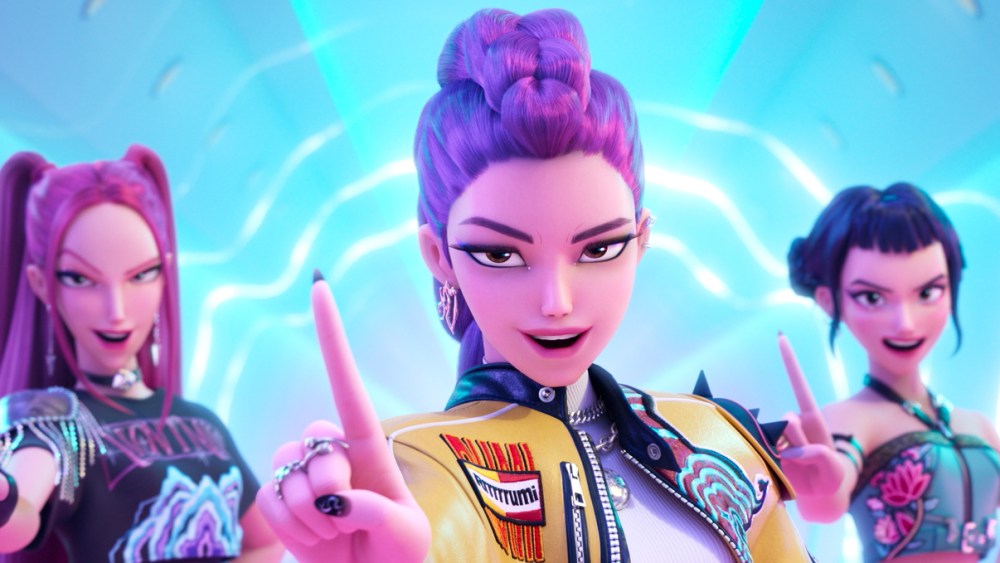TURIN, Italy — A full day of View Conference in Turin ended with animation directors from DreamWorks, Netflix, and Sony Pictures Animation discussing how technology, fan engagement, and soul are reshaping the way stories are made and shared.
The Future of Storytelling panel, moderated by Dan Saat, featured Pierre Perifel (The Bad Guys 2), Maggie Kang and Chris Appelhans (KPop Demon Hunters), Alex Wu (In Your Dreams), Chris Pearn (The Willoughbys), and Pro Machina co-founder Camille Balsamo-Gillis.
Game engines change games
For these storytellers, real-time technology is rewriting the grammar of animation.
“The camera has always been a character, but now we can actually express that very quickly,” Pearn said, explaining how Unreal Engine changed the speed and flexibility of production.
Kang said she expects her “KPop Demon Hunters” team to use Unreal for only a small portion of the film. “We were told we would only use 20 percent of the movie that way, but we ended up using it all,” she said. “We will be able to film interviews that we were not able to do before.”
Balsamo Gillis, who specializes in miniatures and practical effects, called for a balance between the physical and the digital. “There are still many practical solutions,” she says. “There is something unparalleled about working with physical, real assets.”
Perifel agreed, saying, “If F1 hadn’t been shot the way it was shot with real cars, that movie wouldn’t be what it is today. You can see that on screen.”
Music industry moment?
Appelhans likened the current state of animation to the digital revolution in music.
“This is similar to what happened in the music industry,” he says. “Billie Eilish and her brother made music without a big label and built an audience on Spotify. Animation has its own musical moment, and we might see it disrupt old production models in interesting ways.”
He said streaming and new platforms have lowered the barrier for small teams “talented and dedicated to finding an audience” in the same way musicians started going online 15 years ago.
The fans are the marketing team
The cultural takeover of “KPop Demon Hunters” provided an example of fan-driven success.
“Our core audience is teens to early 20s, and they are content makers,” Kang says. “They promoted this movie. They created a worldwide buzz that you would never get with a staggered theatrical release.”
Appelhans added: “You see fan-generated content and then you see the studios put out promotional pieces, but for some reason the audience isn’t as sure and you can smell it…The fans start owning your movie…It’s more raw and convincing.”
Wu called this two-way interaction essential to the next stage of storytelling. “Part of the future of storytelling is interaction with the fan base, the conversations that happen between creators and viewers,” he said.
Animation continues to be a medium, not a genre!
Wu said younger viewers no longer view animation as “for kids,” as many older viewers stubbornly do.
“Every time I talk to young people, they don’t see anime and cartoons as something for kids,” he said. “They experienced stories with a broader range of tones and themes. For them, those barriers no longer exist.”
Pointing to the influence of anime, Perifel said, “In Japan, anime is for everyone. It’s a Western reflex, probably more so among Americans than Europeans, to think of anime as children’s entertainment.” “With animation, you can really do anything you want, and that’s what’s exciting about the next generation.”
pay attention to where your audience is
Audiences have not disappeared, but rather have become fragmented and fragmented into countless content silos.
“Cable was a captive audience,” Pern said of his early days in Canada. “That’s gone now. Where the audience goes, that’s where we have to pay attention.”
He warned that while monetization remains difficult, the democratization of distribution means “the really interesting, smart, great filmmakers are going to win.”
The industry has responded to major changes in the past.
When the discussion turned to AI, Pearn recalled earlier confusion. “When I started as a 2D animator, I saw {Autodesk} Maya take away most people’s jobs and half the studio was gone,” he said. “All we can do is push back against ourselves as creators.”
Others agree, distinguishing between human creativity and automation. “It’s like the iPhone camera: everyone has one, but most of its features are something no one sees,” Woo says. “It’s not the tools that matter, it’s how you use them.”
Perifer agreed: “AI doesn’t speak to any of us. It’s the human voice behind the work that brings people together.”
The loudest applause went to Chris Applehans, who said that human labor generation models have been trained to provide that capability, saying it’s “one of the greatest shoplifting acts ever seen in human history. So even the AI tools that help rotate drawings into 3D models are leveraging the last 40 years of CG modelers who developed those capabilities? It (model training) just took all of that and swallowed it all up,” he continued, “and it doesn’t belong to any of these things.” And they’re really excited for us to get through that and start talking about what we can do with this tool. But the truth is, it’s the theft of millions of artists and their works. In my opinion, there needs to be a more responsible calculation of how that happened and how people can be compensated for it. Then you’ll feel much more comfortable utilizing this as a tool. You just synthesized something that humans spent a century or two coming up with, and you can’t steal it. Damn it, let’s just move on. ”
There was a mutual belief that the talent for storytelling could be found and that it would still be successful, but it is clear that the route and method could change.
“Art comes from the soul and is unique to humans,” Wu said, concluding the session. When asked where he sees himself in 10 years, Kang said with a smile, “I want to continue making strange things and projecting strange things on screen.”

